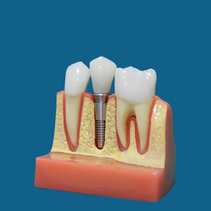ORTHOGNATHIC SURGERY
CORRECTIVE JAW SURGERY
Corrective jaw surgery, also known as orthognathic surgery, addresses issues where the jaws fail to meet correctly and/or teeth do not align properly within the jaw structure. This approach involves straightening teeth through orthodontic treatment and realigning a misaligned jaw through surgery.

Dr. Dale Gallagher does exceptional jaw transformations and collaborates with other doctors to achieve the comprehensive results needed. Trust his work because he is the best in the business and he has a great attitude, making you feel assured and informed...Only go to the best, Dr. Dale Gallagher.
Why Corrective Jaw Surgery is Performed
Corrective jaw surgery is performed to address both functional and aesthetic concerns. Functionally, it improves chewing, speaking, and breathing, and alleviates TMJ disorders. Aesthetically, it enhances facial balance and harmony.
Key Focus Areas Before and After Corrective Jaw Surgery
-
Jaw Alignment and Bite
-
Facial Symmetry
-
Dental Health
-
Breathing and Sleep
-
TMJ Health
-
Posture and Muscle Tension
Understanding the anatomical changes before and after corrective jaw surgery is crucial for setting realistic expectations and achieving optimal results.
Jaw, TMJ and Bite Alignment
When the jaw joints, bite, and jaw bones are not properly aligned, it can lead to a host of issues. Misalignment in these areas can result in symptoms such as chronic jaw pain, difficulty chewing, headaches, teeth grinding (bruxism) and Temporomandibular Joint Disorder , and even problems with speech and breathing.
Addressing these alignment issues through orthognathic surgery is crucial not only for improving facial aesthetics but also for alleviating these discomforts and restoring proper function.





Qualifications for Corrective Jaw Surgery
A good candidate for orthognathic surgery is someone who is experiencing the following symptoms:
Chronic Jaw or TMJ pain
Difficulty chewing, biting, or swallowing
Difficulty speaking or breathing
Misaligned
Jaw
Overbite / Underbite
Teeth do not touch
Protruding Jaw
Sleep
Apnea
ABOUT JAW SURGERY
Dr. Gallagher has helped thousands of patients with orthognathic surgery achieve the pain-free, confident smile they deserve. He has authored scientific articles and contributed to textbooks on orthognathic surgery, which other oral surgeons have referenced over many years. His unique surgical experience ensures life-long successful outcomes for his patients.
CALL US TODAY!
We prioritize your comfort and safety throughout every step of your experience. We strive to exceed your expectations at every visit, ensuring you receive the highest quality of care tailored to your individual needs. Trust our team to restore your smile with precision, expertise, and a genuine commitment to your oral health journey.

Jaw Surgery
Dr.Gallagher and his whole team are a group of talented and experienced practitioners. Their knowledge, fortitude, patience and compassion made my jaw recovery possible. I’ve struggled with pain and inhibited eating for years, and through their guidance - my journey a success. They guaranteed the success of my two jaw surgeries and I never fought the recovery alone. 10/10 recommend for your jaw pain and issues! Thank you Gallagher and team

















